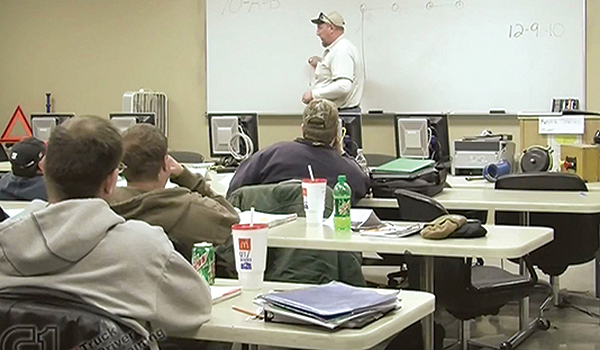Senior Reporter
Study: Training Helps Younger Drivers Stay as Safe as Those Retiring

[Stay on top of transportation news: Get TTNews in your inbox.]
Proper training and mentoring can help ensure younger truck drivers filling the void left by those retiring from the industry develop and maintain safe driving habits, and will also help address the looming threat of a driver shortage in trucking, a new study commissioned by the Federal Motor Carrier Safety Administration determined.
“We have challenges coming our way in the next decade, such as a greater problem with current drivers retiring,” said Greer Woodruff, senior vice president of safety, security and driver personnel for J.B. Hunt Transport and a member of the Motor Carrier Safety Advisory Committee of FMCSA, which tasked the Virginia Tech Transportation Institute with studying the relationship between age and safety with truck drivers. The study concluded that there is “no safety-based reason not to use younger drivers when structured training, mentoring and coaching systems are in place.” The study was presented to MCSAC during a meeting July 14.
The study data, which included information on more than 9,000 interstate truck drivers from age 21 to 64, found that driving experience, rather than age, has a greater impact on driver safety risk, said Susan Soccolich, a researcher at VTTI who worked on the study.

“What we found was experience seemed to be a bigger factor on driving risk,” she told the committee. “If there is a notion that 21- to 24-year-olds might be a high-risk group, we don’t feel that our study found that relationship.”
The committee was tasked by FMCSA with exploring the aging demographic of the commercial motor vehicle driver workforce on the truck and bus industries, and whether the trend will “exacerbate the driver shortage problem.” FMCSA stakeholders have expressed concern about the need to address the driver shortage, including options for allowing younger drivers to enter the industry, FMCSA said. The agency noted that with many impending CMV driver retirements, carriers seek younger drivers to replace them.
RELATED: Industry Was Short More Than 60,000 Drivers in Meeting Demand at End of 2018, ATA Says
The study assessed safety performance by comparing drivers of different ages with the same reported experience level and comparing drivers of different experience levels with the same age. It also assessed safety performance using carrier-recorded crash involvement, Motor Carrier Management Information System crash involvement and moving violation involvement.
MCSAC is an 18-member panel that provides advice and recommendations to FMCSA’s administrator on motor carrier safety programs and motor carrier safety regulations. The committee is composed of members appointed by the agency’s administrator for two-year terms and includes representatives of motor carrier safety advocacy, safety enforcement, industry and labor communities.

Students at C1 Truck Driver Training attend classroom instruction. (C1 Truck Driver Training via YouTube)
Issues that were explored by MCSAC included:
- How would an aging workforce impact motor carriers’ ability to deliver services and goods safely in interstate commerce?
- What impact will this change have on supply chains?
- What is the forecast for the future?
- What can be done to mitigate the impacts?
- What role, if any, does the committee recommend FMCSA play in this effort?
Despite the study conclusion, some panel members disagreed about whether 21- to 24-year-old drivers can match the safety performance of older drivers. Soccolich conceded that, in some cases, a lack of experience contributed to younger drivers showing a higher risk of crash involvement.

What does it take to be a commercial driver, and what are schools doing to train them? Host Michael Freeze speaks with Chris Thropp of Sage Truck Driving School and Don Lefeve of the Commercial Vehicle Training Association. Hear a snippet, above, and get the full program by going to RoadSigns.TTNews.com.
“We see a correlation between maturity and experience being the safer driver,” added committee member Danny Schnautz, vice president at Clark Freight Lines Inc. in Pasadena, Texas. “Typically, maturity comes with age.”
Committee member Gary Catapano, of the National School Transportation Association, expressed concern that people looking to the VTTI research for guidance may be overly swayed by the results. “The research should be used with a high degree of caution,” he said.
The committee agreed that at its next meeting, members would explore the extent of the driver shortage by obtaining information on the number of new drivers entering the CMV industry through medical certificate applications, department of motor vehicle records, commercial driver license records, truck driver training school student numbers, and identifying nine states that could provide intrastate driver data.
Want more news? Listen to today's daily briefing:
Subscribe: Apple Podcasts | Spotify | Amazon Alexa | Google Assistant | More




